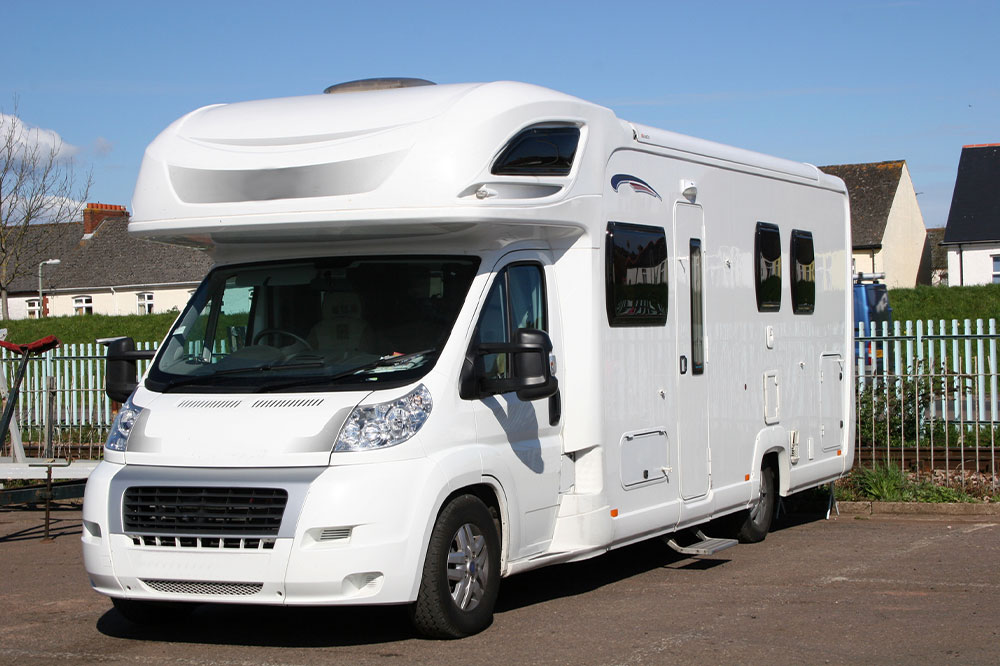Campers and RVs – Differences, types, and tips
Hitting the road in an RV is thrilling, but for first-timers, the numerous options available can create confusion. To find the right automobile for one’s needs, consider key factors like the amenities and features offered, vehicle length, and ease of driving. Assessing these aspects helps ensure a comfortable travel experience. One should prioritize their preferences to select an RV that suits their lifestyle and adventure plans, making their journey enjoyable and stress-free.
Campers and RVs: What’s the difference?
RV stands for ‘Recreational Vehicle,’ a term that can be broadly used to refer to campers, camper-trailers, pop-up campers, motorhomes, and more.

Although all of these qualify as recreational vehicles, the word ‘camper’ is commonly used for RVs that are towed behind you, while RV is reserved for vehicles that can be driven by you.
Types of recreational vehicles
There is a range of different types of recreational vehicles you can choose from for your next vacation. Here is a short list to help you make your decision:
Pop-up camper or trailer
The pop-up camper is the most compact and lightweight of all the RVs.
Travel trailer
This is the broadest category of trailers, encompassing all non-folding camper trailers. They can be anywhere between 10 to 40 feet in length and weigh between 1,100 to 12,000 pounds. Given the wide range of options available in this category, they may cost anywhere between $10,000 to $50,000 or more, based on the amenities offered. Travel trailers are generally towed when hitched to an SUV or a truck and can sleep up to 8 people.
Fifth-wheel camper
Just like travel trailers, fifth-wheel campers are also towed behind a pickup truck. Instead of attaching to your car’s bumper, the fifth-wheel camper latches onto a U-shaped coupling mounted on the truck’s cargo bed. Because of this central latching, they are more stable than travel trailers and have a greater storage capacity. Fifth-wheel campers can be anywhere between 25-40 feet and sleep up to 9 people.
Class B (and B+) RVs
Class B RVs are the smallest option for a fully motorized recreational vehicle. These motorhomes are typically between 18 to 24 feet and offer basic storage and utility space. Class B RVs, sometimes also called campervans, are one of the most affordable motorhomes, the cheapest on gas, and the easiest to park.
There is a category of RVs that is not quite as small as Class B, but not as large as Class C, called the Class B+ Motorhomes. This variety of motorhomes may come with extra kitchen and living space, multiple sleeping arrangements, a shower, and more, at a cost that is fractionally higher than the Class B RVs.
Class C RVs
Class C RVs resemble large trucks and are considered middle-of-the-road cost-wise. They can easily sleep a family of 8 as they are up to 41 feet in length and offer a gas mileage between 9-12 mpg. Despite their larger size, they are relatively easy to drive and feature way more amenities than the Class B & B+ RVs.
Class A RVs
The Class A RVs are the biggest and most expensive of all. They can be up to 45 feet in length and difficult to maneuver and park, but they offer every feature you would want in a house-on-wheels. These RVs have the lowest fuel efficiency and may sometimes limit access to certain areas due to their size. However, they offer the most amenities and luxury options, with some motorhomes featuring full washer-dryer sets and garages!
Tips for buying an RV
Buying an RV is an expensive affair. Before investing in one, it is essential to consider your finances, needs, and travel plans, as well as the amenities you may need. Once you have decided, you may consider purchasing a new RV or a used one.
Used RVs will be cheaper for purchasing as well as insurance. You may opt to rebuild or redecorate it later. However, it is important to inspect them properly as they may have extensive damage in areas not visible at first glance.
New RVs will come with the latest technology and save the risk of wear and tear. You can find one that fits your needs perfectly when buying a new RV. Depending on the purchase, however, these may be more expensive than used RVs and come with a higher insurance premium.
